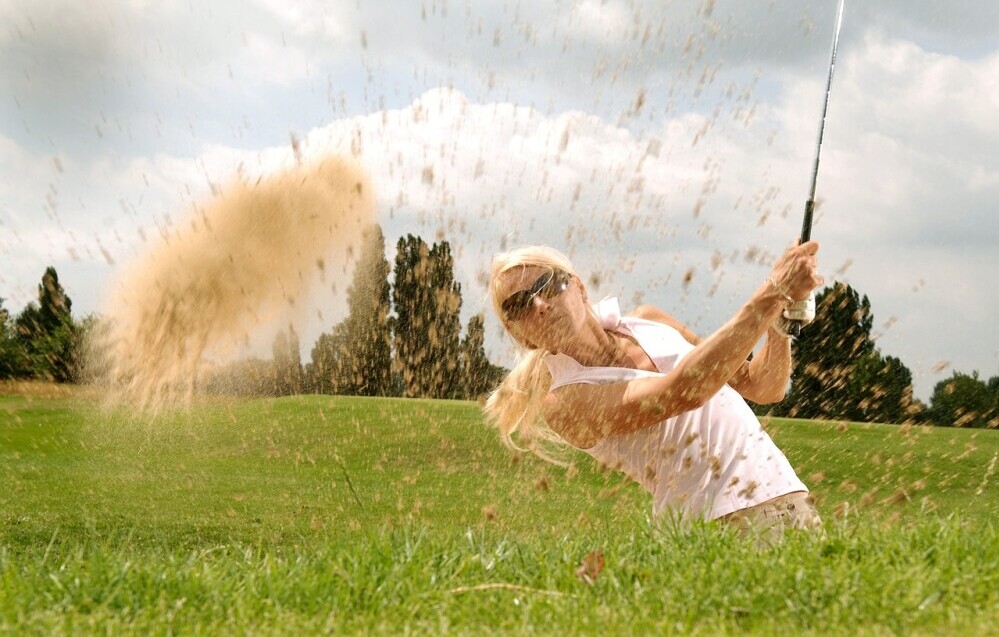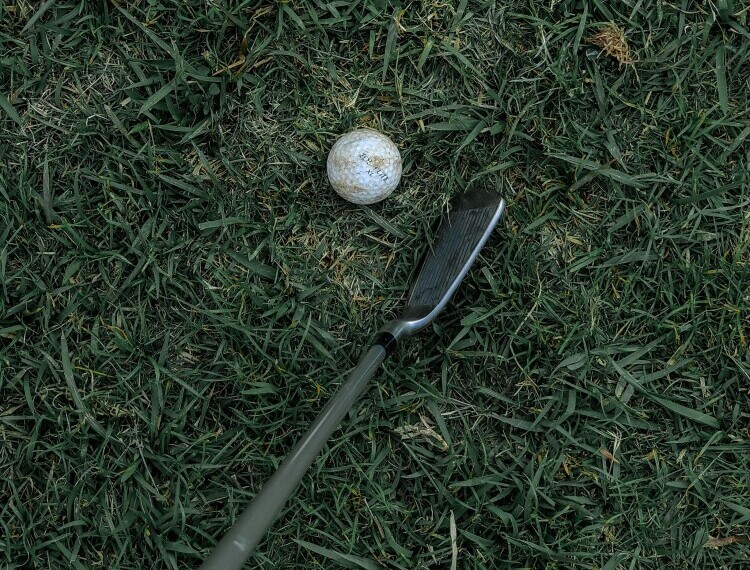How To Play Uneven Lies In Golf


Fore! Quick note: a few links here are affiliate links. If you snag gear through them, I earn a small commission — no extra strokes added to your game.
Bad lie in golf? It happens to everyone, not just weekend warriors. I remember watching a pro tournament where even the most seasoned players struggled with bad lies. So, what actually makes for a ‘bad lie’? Essentially, it’s when your ball ends up in a spot that makes your shot way harder than it needs to be. Usually it involves your ball being in the rough in tall grass or brush. And this is not where you want to be. Don’t fret, because the golf viking is here to help you play out of even the ugliest lies.
Common situations leading to bad lies include thick roughs, fairway divots, uneven ground, and even hazards like bunkers. Imagine your ball nestled deep in the rough or awkwardly perched on a slope. These positions can mess with your stance, your swing, and even your confidence. Having to hit your ball from these spots can make for a truly frustrating day on the golf course.
Bad lies impact your game in several ways. They can throw off your balance, affect the trajectory of your ball, and force you to use clubs you’re less comfortable with. It’s a challenge both mentally and physically. It will really force you to have to try to make the best decision to get out of trouble and not compound your mistakes so you don’t get into even more trouble.
Even the pros aren’t immune. Take Phil Mickelson, for example. He’s known for his short game wizardry, but he’s faced his share of tricky lies and still makes it work. It’s part of the game, and learning how to manage these situations can turn a frustrating experience into a chance to improve. But when it comes down to it, the best bet to keep yourself from a bad lie is hitting your ball in the fairway!
Mastering lies is part of shot-making strategy. To sharpen your foundation, review the basic rules for golf.
Ready to level up your golf game? Click here.

Importance of Keeping Your Ball in the Fairway
Hitting the fairway isn’t just a pro tip—it’s crucial for anyone looking to up their golf game. When you keep your ball in play, you make life a lot easier for yourself. Fairways provide a more predictable and solid surface for your shots, reducing the stress of dealing with difficult lies.
The rough, on the other hand, is a different beast. Thick grass can swallow your ball, making it tricky to get a clean hit. Bunkers and other hazards complicate things even more. Imagine trying to swing in a thick patch of grass where you can’t get good contact or control. It’s not fun and can ruin your scorecard.
Let’s look at some real-world examples. Players who consistently land in the rough often struggle to get back on track, leading to higher scores and a tough day on the course. In contrast, those who stick to the fairway tend to have more consistent rounds and fewer headaches. Much easier and smoother game playing from the fairway as opposed to the rough.
Keeping your ball in the fairway isn’t just about today’s game— it pays off in the long run. Accurate shots mean fewer strokes, which can lead to better scores and more enjoyable rounds. Plus, it builds your confidence knowing that you’re playing from a good position, setting you up for success through the round. Investing in improving your accuracy now will save you time and stress in the future. Let’s go over a few things that will help keep you out of sticky situations.
Uphill or downhill lies often require loft adjustments. Learn how in how to loft golf ball.

Strategies to Avoid Bad Lies
Pre-shot planning is your first line of defense. Taking a few extra seconds to evaluate your shot can make a world of difference. Look at the terrain, consider wind direction, and choose your target wisely. Think of it as setting yourself up for success before you even swing.
Reading the terrain is another game-changer. Notice any slopes, hazards, or uneven areas that could mess with your shot. Being aware of these factors helps you adjust your aim and swing accordingly. It’s all about playing smart and keeping yourself out of tough situations.
Club selection is crucial, too. Sometimes it’s better to use a club that offers more control rather than just going for distance. A well-placed shot can save you from a nasty lie and set you up for a better follow-up. Experienced golfers know that it’s not always about power; it’s about precision. So there may be times where you hit it shorter so your next shot will be much more comfortable rather than just going for distance and potentially putting yourself into danger.
Practice drills can dramatically improve your accuracy. Spend time at the driving range working on hitting straight shots and controlling the ball’s direction. Focused practice can help you consistently place the ball where you want it, avoiding those dreaded bad lies.
So, invest some time in preparation, pay attention to the course, and prioritize accuracy over power. These small adjustments can save you big headaches and lead to more enjoyable rounds. Now that we’ve gone over how to avoid the bad lie, but now that you’re in it, how do you best get out?
When practicing uneven lies, the range is invaluable. Discover its benefits in what is a driving range?

How to Successfully Hit from a Bad Lie
Bad lies in golf don’t have to ruin your game. Evaluating your lie is the first step. Take a moment to really look at your ball’s position, the surrounding terrain, and any obstacles between you and the target. This assessment will guide your next steps and help you choose the right approach. Experience will help you figure out the best move, and you will know how to handle the situation.
Adjusting your stance and swing to match the lie is crucial. For example, if your ball is on a slope, align your body with the incline and aim to maintain balance throughout your swing. Uneven lies may require you to choke down on the club or adjust your grip to gain better control. Adapting to these changes can make a huge difference. You may be required to alter these things in order to adjust to your particular lie.
Club selection becomes even more important in these situations. Certain clubs work better for different types of lies. For instance, a lofted club like a wedge can help you get under the ball and lift it out of thick rough, while a lower-lofted club might be better for tight lies. Knowing which club to use can save you strokes and get you back in a good position.
Mental strategies can’t be overlooked either. Stay calm and focused, even when faced with a tough shot. Visualize the shot you want to make and commit to it. Confidence plays a big role in executing challenging shots. Keep a strong head and power through those bad lies.
Pro tips can turn bad lies into opportunities. Many seasoned golfers view bad lies as a chance to showcase their skills. Remember, every bad lie you successfully navigate makes you a better player. Take it in stride, learn from it, and you’ll start looking at bad lies as just another part of the game. I’ll see you out on the golf course, hopefully not in the tall grass!
Uneven lies test your short game control around the greens. Sharpen those skills with short game mastery.


